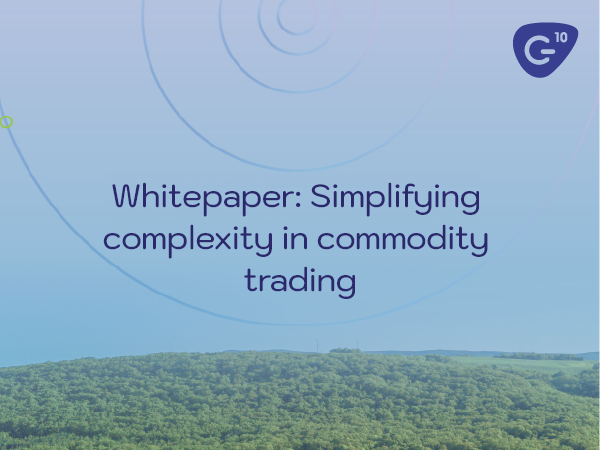If you’re beginning to explore the world of carbon credits or other environmental markets, you will probably encounter more acronyms than you were expecting. Below, we explore some of the main acronyms you are likely to see, broken down thematically.
GHG – Greenhouse gas
Greenhouse gases retain heat in Earth’s atmosphere rather than allowing it to radiate into space. The include water vapour, carbon dioxide, methane and nitrous oxide. Human industrial and agricultural activity releases more of these gases, which is generally agreed to be contributing to climate change. Governments, societies and businesses are therefore all working on ways to reduce their climate impact, including by offsetting their GHG emissions via voluntary markets.
VCM – Voluntary Carbon Market
Voluntary carbon markets are where carbon offset credits are traded and bought by organisations that are voluntarily choosing to reduce their net carbon emissions. This is in contrast to compliance markets where the purchasing of credits is mandatory.
ESG – Environmental, Social and Governance
ESG is a shorthand for the activities organisations are taking to improve their impact on society and the environment. It also provides a framework for investors, counterparties and other stakeholders to assess an organisation’s non-financial performance metrics.
Participating in environmental markets is often just one tool in an organisation’s ESG activities, but as we will see below, it can also have a social impact.
SDG – Sustainable Development Goals
The Sustainable Development Goals are a UN initiative providing a shared blueprint for peace and prosperity for people and the planet, now and into the future. The 17 goals recognise that ending poverty must go hand-in-hand with strategies that improve health and education, reduce inequality and spur economic growth.
The SDGs intersect with carbon markets as many projects creating offset credits also contribute towards one or several of these goals. When projects record the SDGs that they contribute towards, they can often command a higher price for credits, as organisations purchasing these credits can demonstrate an impact on wider ESG goals than simply carbon capture.
SBTi – Science-Based Targets initiative, IPCC – Intergovernmental Panel on Climate Change
The IPCC issued a warning in 2018 that global warming must not exceed 1.5 degrees C above pre-industrial levels if we are to avoid the most catastrophic impacts of climate change. The SBTi promotes best practices in emissions reductions and provides guidance to companies to set science-based targets in line with the climate science. As of March 2023, over 2,300 companies have had science-based targets approved by the SBTi.
TCFD – Taskforce on Climate-Related Financial Disclosures
The TCFD was established by the Financial Stability Board (FSB) to develop recommendations on the types of information that companies should disclose to support stakeholders in assessing and pricing climate-specific risks. By November 2022, over 4,000 organisations from 100+ countries were supporting the TCFD.
VCMI – Voluntary Carbon Markets Integrity Initiative
VCMI was announced by COP26 President-Designate Alok Sharma in 2021. It promotes the vision for voluntary carbon markets to contribute to climate action while also supporting the UN Sustainable Development Goals. VCMI advances the meaningful use of carbon credits for voluntary purposes as well as the business case for scaling high integrity voluntary carbon markets. Stakeholders include government, business, civil society, and Indigenous Peoples organisations.
REDD+ – Reducing Emissions from Deforestation and forest Degradation
REDD+ is a United Nations-backed framework that aims to reduce climate change by reducing deforestation. The “+” signifies the role of conservation, sustainable management of forests and enhancement of forest carbon stocks.
Carbon credits can be certified under one of several schemes to show they are from projects that meet REDD+ criteria. REDD+ projects aim to offer local communities revenue from conserving the forest they live in and help them avoid sources of income that destroy the forest – such as plantations, farming, and illegal logging.
The REDD+ framework has faced criticism because its criteria are broad so REDD+ carbon credits can be of variable quality. It is also difficult to calculate the true carbon reduction of a REDD+ project as they rely on a baseline estimate of what deforestation would occur had the project not been undertaken, so can never be entirely accurate.
However, proponents of the framework argue that it can command higher credit prices because of its additional impacts, such as encouraging better biodiversity than other offsetting projects, and that carbon ratings agencies do value some projects as very high quality and low risk.
Because REDD+ covers such a range of credits, there are also acronyms within this broader category:
APD – Avoided Planned Deforestation
Nature-based carbon credits that avoid releasing carbon that would otherwise be emitted (such as REDD+ credits) are known as avoidance credits. Avoided Planned Deforestation means preventing conversion of land from forest to other uses by commercial agents, such as for cattle ranches or plantations.
AUD – Avoided Unplanned Deforestation
This protects forests or other natural resources from localised sources of deforestation such as local communities growing crops for consumption or illegal logging.
CORSIA – Carbon Offsetting and Reduction Scheme for International Aviation
CORSIA is a compliance scheme, not a voluntary carbon market but it does impact on voluntary credits too. CORSIA is a UN scheme to ensure that any rise in international aviation emissions above 2020 levels are offset elsewhere.
Airlines must purchase eligible carbon credits to offset their carbon emissions from international flights above their threshold value. Although this is a compliance scheme, airlines will be able to choose where they purchase credits.
The International Civil Aviation Organization (ICAO) lists several registries and verified standards that are eligible. The 2021-2023 pilot phase includes:
- American Carbon Registry (ACR)
- Architecture for REDD+ Transactions (ART)
- China Greenhouse Gas Voluntary Emission Reduction Program
- Clean Development Mechanism (CDM)
- Climate Action Reserve (CAR)
- Global Carbon Council (GCC)
- The Gold Standard
- Verra’s Verified Carbon Standard (VCS)
CORSIA is relevant for all voluntary carbon market participants as some use it as a measure for whether a project is of sufficient quality, however others argue that the standards are too low, and the Clean Development Mechanism (CDM) scheme collapsed between 2013 and 2020, before being revived.
On the topic of the CDM, the acronym CER, Certified Emission Reduction, is the name for the credits that are issued under the CDM.
And as we will see below, CORSIA also influences exchanges offering futures contracts in carbon markets, as several offer CORSIA-eligible products.
EACs – Energy Attribute Certificates, RECS – Renewable Energy Certificates
In the grid, renewable energy is mixed with power from other sources. Energy Attribute Certificates provide businesses the legal property rights to the renewable energy, as one EAC represents the ‘renewable-ness’ of one MWh of electricity. EACs are tradeable, market-based instruments. They can be separated from the underlying electricity and sold to allow another party to claim one MWh of their energy consumption as renewable energy.
A REC is created for every megawatt-hour (MWh) of electricity generated and delivered to the grid from renewable energy sources in the USA and Canada. Electricity cannot be considered renewable without a REC. Other tradeable EACs exist in the UK as Renewable Energy Guarantees of Origin (REGOs), and in Europe as Guarantees of Origin (GOs).
Types of carbon contracts
Many of the acronyms in use in voluntary carbon markets refer to exchange contracts. Several exchanges offer carbon contracts, so the below is a sample with information as of the time of writing:
- GEO – CBL Global Emissions Offset, a physically settled futures contract that allows for delivery of CORSIA-eligible voluntary carbon credits. The contract is seller’s option with credits accepted from 3 different carbon registries.
- N-GEO – Nature-Based Global Emissions Offset, a contract using offsets sourced from Agriculture, Forestry, and Other Land Use (AFOLU) projects. Offsets must meet the eligibility criteria defined by Verra’s Climate, Community and Biodiversity (CCB) Standards.
- CET – CORSIA Eligible Tonnes traded on the AirCarbon Exchange (ACX). Other contracts on this exchange include GNT – Global Nature Tonnes (nature-based credits), GNT+ (which include certificates for co-benefits) and SDGT (which include certification of alignment with the UN Sustainable Development Goals).
Other carbon exchanges include Carbon Trade Xchange (CTX), Climate Impact X and EEX.
Conclusion
There are so many acronyms in voluntary carbon markets, and with these markets rapidly evolving, the list is unlikely to remain fixed for long. Whilst this explainer should cover most of the major terms you are likely to encounter, if we have missed any that you think should be included, please do let us know below!
Want to read more?
Subscribe now for monthly updates
By submitting your details you agree that we can store your data and communicate with you. You can opt out of these communications at any time. Read all in our Privacy Policy.



